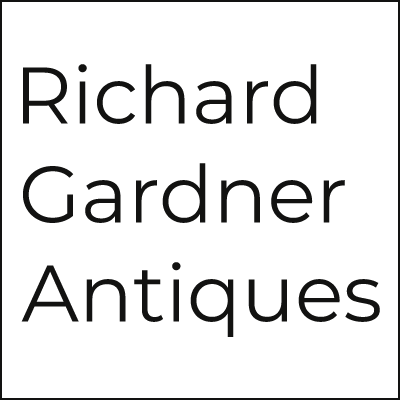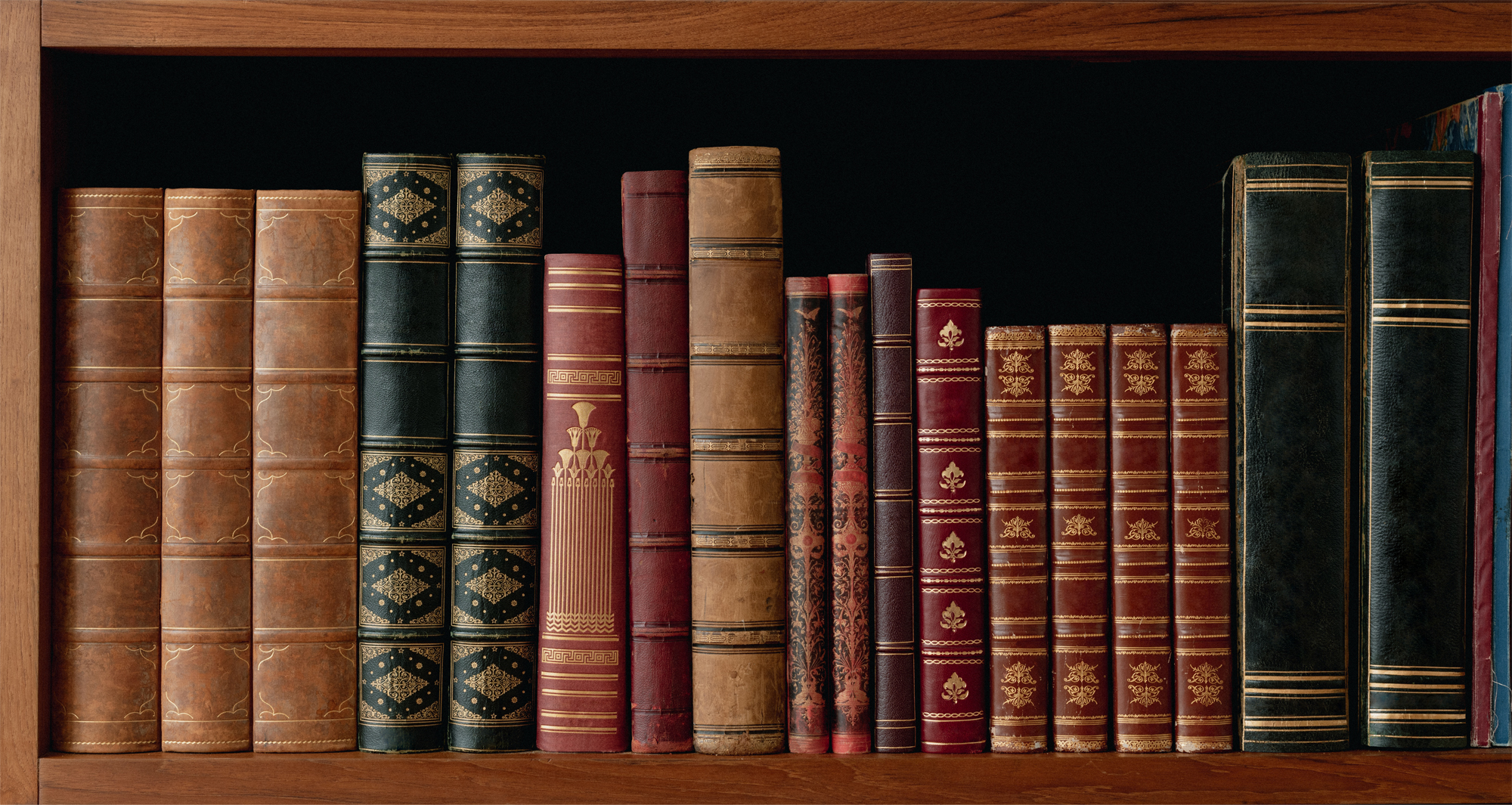Andrew Webster Kiddie Master Modelmaker
ANDREW WEBSTER KIDDIE MASTER MODELMAKER
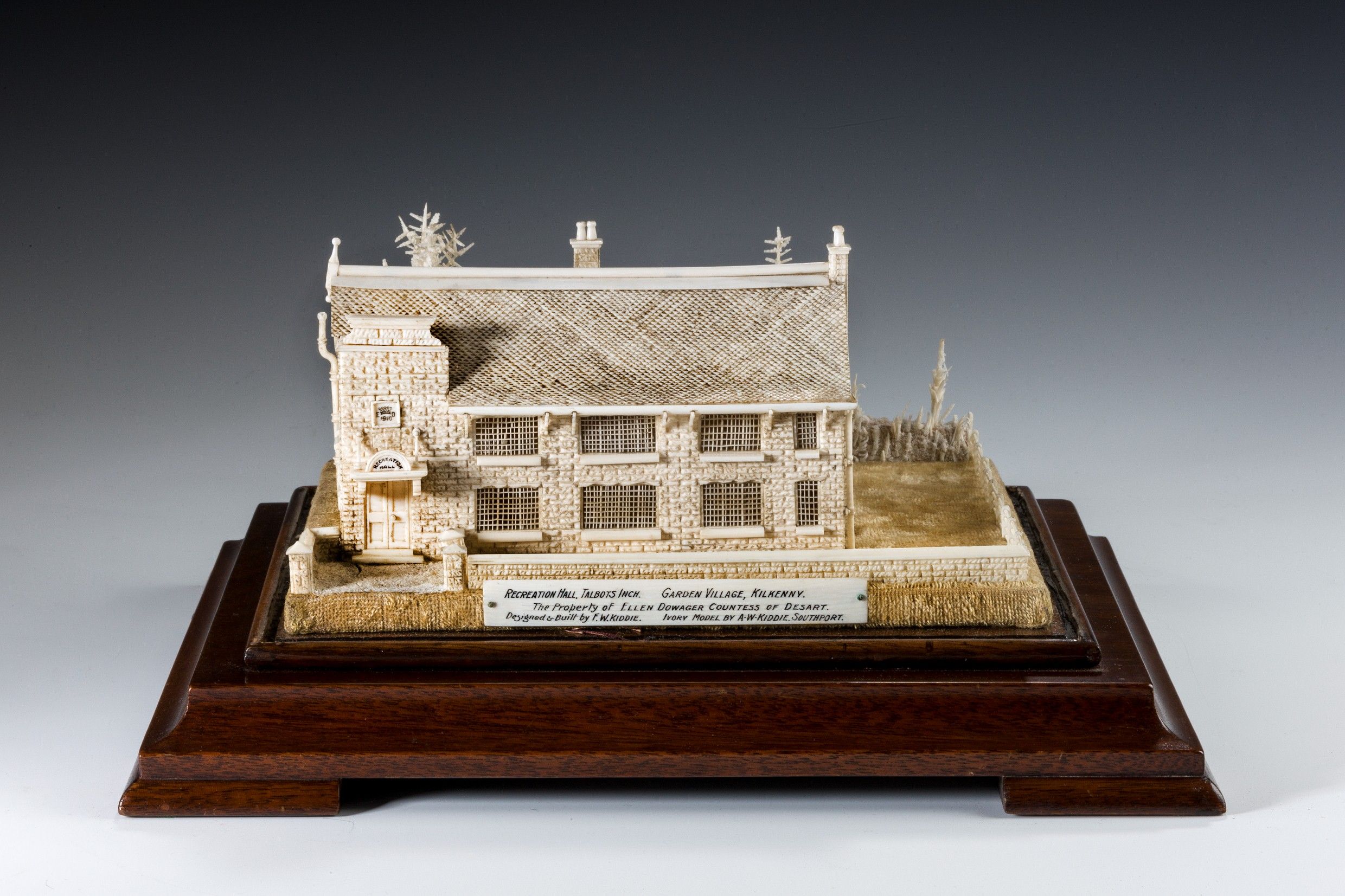 When I saw my first ivory model by Kiddie, the Recreation Hall, Kilkenny, I was amazed at the quality of the work, especially the fine detail on the trees and hedges at the rear and I started to look for other examples by him. The small amount of information that I was able to find intrigued me and on reading about the ivory models of the ships, I made every effort to locate one without success. The next model I was able to locate was the Irish Jaunting Car and again the quality of the work is of the highest quality and interestingly both of these models were produced at the same time and would suggest that Kiddie visited Ireland during the construction of the Recreation Hall. This model also showed the diversity in the range of models he was able to produce and at such a high quality.
When I saw my first ivory model by Kiddie, the Recreation Hall, Kilkenny, I was amazed at the quality of the work, especially the fine detail on the trees and hedges at the rear and I started to look for other examples by him. The small amount of information that I was able to find intrigued me and on reading about the ivory models of the ships, I made every effort to locate one without success. The next model I was able to locate was the Irish Jaunting Car and again the quality of the work is of the highest quality and interestingly both of these models were produced at the same time and would suggest that Kiddie visited Ireland during the construction of the Recreation Hall. This model also showed the diversity in the range of models he was able to produce and at such a high quality.
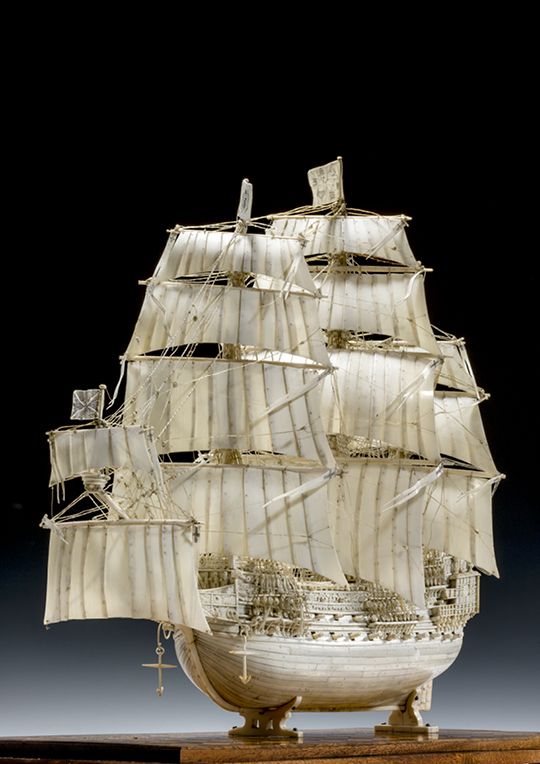 I was so excited when I was contacted by two of Kiddie’s great granddaughters, saying that they had a ships model of the Royal Sovereign and would I be interested – imagine my response! We made arrangements for me to go and see the model and it was even better than I could ever have imagined and if you look at the photographs you will see a model made by somebody with the highest level of skill. The icing on the cake was that there was another model of the Dukes Hotel, Southport, which was also available, so we now have four models available, which I believe is the largest group outside of museums.
I was so excited when I was contacted by two of Kiddie’s great granddaughters, saying that they had a ships model of the Royal Sovereign and would I be interested – imagine my response! We made arrangements for me to go and see the model and it was even better than I could ever have imagined and if you look at the photographs you will see a model made by somebody with the highest level of skill. The icing on the cake was that there was another model of the Dukes Hotel, Southport, which was also available, so we now have four models available, which I believe is the largest group outside of museums.
The next task was to try and locate more information about A W Kiddie, which hasn’t been easy, and I would like to thank everyone who has been so helpful to me. Firstly, the great granddaughters had a portrait of A W Kiddie which they have allowed us to reproduce for you to see. We then contacted the company, Kiddie of Southport, Ltd, which is the company that A W Kiddie started in the 1860’s and which is still going strongly today, who gave us some information about Kiddie and told us about some of his models being in the Botanic Gardens Museum, Southport.
We contacted this museum, who were able to confirm that indeed they did have a number of his ivory models in their collection and these were all of buildings in Southport and were completed around 1910-1914 and included the Bellvue, the first guest house in Southport, Captain Rockcliffs Cottage, Halls Chapel, Belmont Castle, Wesleyan Chapel, Old Windmill, Southport Market and Victoria Baths. Unfortunately the Botanic Gardens Museum is currently shut and is being rebuilt and will re-open as the Art Gallery, Southport, in 2013/2014.
It would appear that all the ivory models we have been able to locate date from 1910 onwards and would seem to indicate that he started making these models after retirement from his company and are truly remarkable when you see the quality of the work he was producing at the age of 66 until he was 73, when he completed the Royal Sovereign.
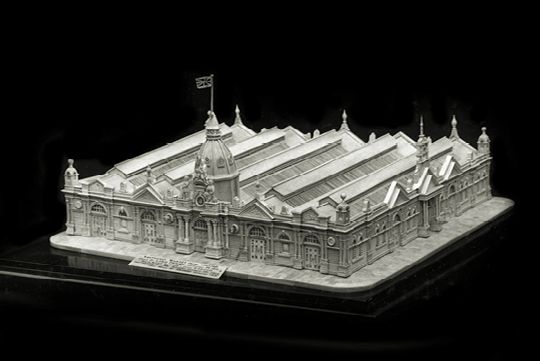 The Botanic Gardens Museum then put me onto the Liverpool Museum, who have a collection of Napoleonic prisoner of war ships models donated by Sir George Pilkington and which were restored by Kiddie. I enquired whether or not they had any ivory models by Kiddie in their collection, to which they replied no, but they would send me what information they had and some photographs of their collection. Three days later the package arrived, and imagine my surprise when included was an autobiography of A W Kiddie, written by himself towards the end of his life. This makes fascinating reading and we have therefore included this in full within this section and we hope you enjoy reading it. We have also been given access to a family photograph album of the ivory models produced by A W Kiddie, which seems to include a lot of the models he made, together with a photograph of A W Kiddie.
The Botanic Gardens Museum then put me onto the Liverpool Museum, who have a collection of Napoleonic prisoner of war ships models donated by Sir George Pilkington and which were restored by Kiddie. I enquired whether or not they had any ivory models by Kiddie in their collection, to which they replied no, but they would send me what information they had and some photographs of their collection. Three days later the package arrived, and imagine my surprise when included was an autobiography of A W Kiddie, written by himself towards the end of his life. This makes fascinating reading and we have therefore included this in full within this section and we hope you enjoy reading it. We have also been given access to a family photograph album of the ivory models produced by A W Kiddie, which seems to include a lot of the models he made, together with a photograph of A W Kiddie.
We have included some of these photographs in the biography and it appears that he made well over 30 models during this period of his life. What is surprising is that many of these models have not appeared on the market and we cannot trace any of them in museums, so if you know of the whereabouts of any other models, please let us know. Our hope is that someone will purchase the complete collection that we have put together and that they will stay as one group from now on as they are a testament to the man who we think deserves the title Master Modelmaker.
Auto-Biography of Andrew Webster Kiddie, Southport
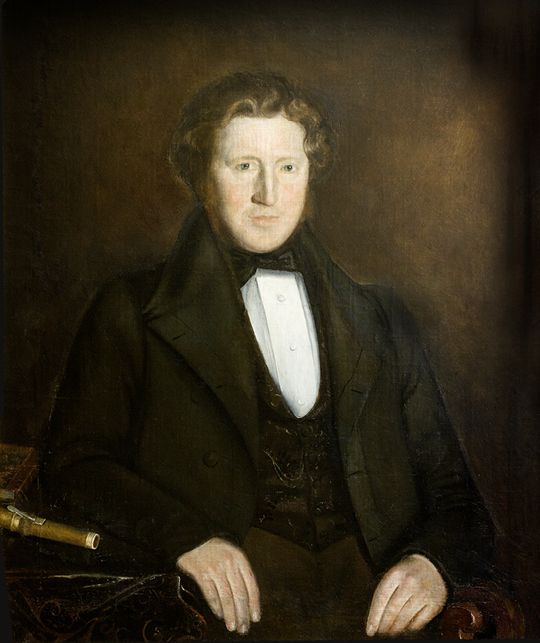 I was born in Dundee on January 5th 1843. My father was a Weaver’s Manager and had charge of one of the original Power Loom Factories. When I was three years of age my Father went to Spain to take charge of a factory which was driven by water and took his family with him. I was in Spain for 10 years and I went to school there. My Father sent my brothers and sisters to be educated in Scotland and it was intended that I should also complete my education in the British Isles.
I was born in Dundee on January 5th 1843. My father was a Weaver’s Manager and had charge of one of the original Power Loom Factories. When I was three years of age my Father went to Spain to take charge of a factory which was driven by water and took his family with him. I was in Spain for 10 years and I went to school there. My Father sent my brothers and sisters to be educated in Scotland and it was intended that I should also complete my education in the British Isles.
There was an English Captain by the name of George Wardle who traded between Coruna and Sunderland and who was friendly with my parents and usually called to see them at Rojal. Captain Wardle professed to take a particular interest in me as he had no sons and he had several times asked my father if he would allow me to go away with him aboard his vessel.
In the year 1855 just after the fall of Sevastopol the Captain called at my house and persuaded my father to allow me to accompany him. After Captain Wardle had promised to treat me well, soundly educate me in England and then to teach me navigation it was decided to let me go. I suppose I would be very keen at the time to join the Captain as he and I had many delightful excursions on the river with a canoe which I handled with much dexterity. I would mention that I was the youngest of the family and had two brothers and two sisters, my mother lived in Spain and was buried in the Parocka de Anca within a short time of her arrival in the country and I cannot remember her as I was under four years of age when she passed away. Captain Wardle’s daughter resided with us for about 12 months and lived with us as a guest, however my father offered to pay the Captain a premium but he refused to accept one and so I left home with what were assumed to be the most exceptional opportunities, and with my father fully believing that I would receive every consideration and attention at the hands of Captain Wardle. Upon setting out my father gave me £3 for pocket money and with this I went with the Captain from Rojal to Ferrol (each riding our own horses) and from there to Coruna in a steamboat where we found our ship lying in the bay. The vessel was a brig named ‘Balmoral’ belonging to Sunderland. I had not been long aboard when one of the crew asked me what I had come for and I informed him that it was my intention to be a sailor. I can always recollect that man’s sarcasm when he advised me to go back to my home and tell my people to make me into a chimney sweep as it would be much better for me. Having the highest expectations I scoffed at the idea of going home but experience soon taught me that the happy dreams of a glorious life on the sea were not realistic.
I could speak a little English so the Captain ordered me to inform the customs officers that we were about to set sail and this was the first order that was entrusted to me. We headed to Bayonne in France (the nearest French port to the Spanish border). The first three nights I slept in a cabin on the larboard side of the ship, afterwards I was turned into the fore-castle and having no hammock I was compelled to sleep on the deck of the fore-castle. The Captain having heard some money ‘jingle’ in my pocket asked me what cash I had and I told him that I had the £3 which my father gave me upon setting out, at the Captain’s request I handed the money to him as he said the men would steal it from me. Arriving at Bayonne I was entrusted with the marketing for the ship as the inhabitants were able to converse with me in Spanish. Before leaving the ship I asked the Captain to give me my money in order that I might buy a hammock and reef jacket but he savagely turned to me and said that he had none of my money. I dare not remonstrate with the Captain and I was in very sore straights as I had no other clothes than the light garments which were adaptable for the warmer climates from whence I came. I may mention that in our voyages I was at Kronstadt (Russia) when the Russian warships were returning after the fall of Sevastopol. I have some occasion to remember this by the fact that I received a sound flogging at the hands of the Captain who accused me of broaching the porter cask. I must state that although I have suffered many hardships and have been considerably tortured I have never been addicted to strong drink and am a total abstainer to this day. I shall never forget my impressions upon landing in England and the sight of so much drunkenness that I vowed never to take intoxicating liquor. After arriving at the home port of Sunderland the Captain changed ships and took command of a brig named ‘The Sharant’ and we shortly sailed for Shant with a cargo of coal. We left Shant with a cargo of brandy consigned to Pickled Herring Wharf, London and from thence back to Sunderland with a general cargo. This was the usual route which I travelled during the 18 months which I spent with Captain Wardle. Although I was apprenticed to the ship owners for seven years (this being the arrangement made by Captain Wardle without my consent). The Captain himself pocketed all my wages and the only money I had from him during the whole 18 months was a sixpence given to me for rowing the Captain and his wife up the Thames one hot Sunday and I spent the money on ’soft-tack’ (bread) as I was not by any means well fed. I had no liberty and even when the crew was paid off I had to remain on board alone on watch, in fact during the whole of my association with Captain Wardle I was much abused and suffered many cruelties which I do not intend to nor will I attempt to describe.
The last time we were in London, the Captain received a letter from my father stating that he had left Spain and was appointed manager of Messrd Busby & Atkins factory at Farnworth near Warrington, this was a firm of flax spinners and sail cloth makers.
My father stated that he intended to build a new house and that he wished me to return home, the Captain told me that he would make all necessary arrangements with the ship owners.
When we arrived at Sunderland the owner of the vessel along with the Captains wife and daughters came aboard and I took the opportunity of approaching the owner and explained that it was my father’s wish that I should now go home and that the arrangements made between the Captain and my father was that I was to remain with the Captain until such times as he required me at home. I also related my bitter experiences and complained before the whole party of the bad treatment which I had received from the Captain, I felt security in the hands of the ship owner. However the Captain insisted that the ship owner should not release me until I had taken one more round voyage.
I told this to my mates and was advised by them that if I remained with the Captain I should be badly dealt with during the trip so I made up my mind to run away from the ship.
The crew made a collection amongst themselves and raised one shilling between them and I then awaited my opportunity. Having considered my plans during the sail from Sunderland to West Hartlepool during which time I persuaded the Captain’s daughter to address me an envelope to my father so that I might write to him in Spanish. Upon arriving at West Hartlepool we got the ship moored under the coal drop and the owner, Captain and families went ashore whilst the ship was coaling. As soon as they had taken their departure the mate who had his wife aboard came to me on deck and asked me when I intended to elope and I said that by the time they had had their tea I should be missing. I at once went into the forecastle and tied up all my earthly possessions in a handkerchief and jumped ashore. The first night I spent at the house of a friendly apprentice and the following morning I was up at 6 o’clock (this was Sunday) and set out to tramp 220 miles to Farnworth near Warrington. I had been told that if I went to the police station at night lodgings would be provided for me and after walking all day on Sunday I went to the police station at a small town the name of which I cannot recollect. The police officer took me into the tramp ward where I slept on boards and was not allowed to leave until late Monday morning. As I thought out my position I came to the conclusion that if the Captain should wish to trace me he could easily do so by communicating with the police and as I was so determined not to go back to the ship I has resolved to destroy myself rather than come under Captain Wardle again. Upon leaving the tramp ward I was handed a small tin of porridge which I ate with avidity as I had had nothing to eat on the Sunday in fact after eating the porridge I spent my first penny of the shilling subscribed by the ship’s crew on a piece of bread.
I continued my journey and slept behind hedges and under hay stacks but during the whole time I did not beg but lived on carrots and turnips which I found in the fields. On Sunday afternoon after being on the road it was pouring with rain and as I had no new clothes since I left Spain I was soaked to the skin in fact my clothes were simply patched with canvas and were thoroughly worn and torn, I passed some small cottages and a man shouted to me and asked me why I did not shelter and after answering his call he took me into his house and immediately upon entering I saw the crucifix hanging over the mantel piece and I exclaimed “What! Are you a Roman Catholic?” and he replied in the affirmative so I told him that I understood England to be a Protestant country for in Spain which is Roman Catholic country you could not be a Protestant. This man was kind to me and gave me a good tea and provided me with sleeping accommodation as well as a good breakfast before setting out next morning.
I continued my tramp and as I went along I saw some boys trying to climb a tree by a rope but as they did not succeed I instructed them and they asked me a lot of questions and before I went on they subscribed three pence between themselves for me and this was all the money I received during the whole journey.
On the tenth day I reached my father who had already heard from Captain Wardle that I had run away from his ship and that I was absolutely worthless being a thief, a rogue and a liar.
My father soon sent for the tailor and for the barber as my hair was hanging over my shoulders and within a short time he had me presentable. Having found that I was quite uneducated he sent me to school and although I was 14½ years of age I was put in the infants class to learn the alphabet. At the third term I told my master of my intention to leave school and afterwards mentioned it to my father who spoke very seriously to me and promised me that I should have a good English education if I would settle down to study and then I should be sent to learn any trade I cared to take up. However I begged so earnestly to be put to a trade straight away and I was sent to Messrs Robson & Cookes Engineers of St Helens and went home every weekend to Farnworth.
During one of these weekend visits to Farnworth I told my father that I was going to make an engine but he laughed and said that I knew as much about an engine as an engine knew about me!! I was very keen on my work and during the dinner hours I went into the erecting shops where I measured up the engines, made sketches and patterns and afterwards got these patterns cast. I used to work every night in the back kitchen of my lodgings which was lit up by two candles and I remember saving up to buy a table vice which cost me nine shillings. One Monday morning I stayed at home and erected my engine in the yard of my father’s factory and connected it up with one of the boilers. I had the engine running when my father and one of my masters came past and saw the result of my effort and they were astonished at the originality of my mechanism. After a few months at the St Helens shop I was sent to a foundry at Widnes and whilst at this foundry I made a steam boat which I sailed on the reservoir. I made all the mechanical parts of the boat and the boiler was fired up with charcoal and the model worked very well. I soon felt that I wanted to get back to the engineering shops so that I might learn the engineering trade more thoroughly and as I found that there was practically nothing in the engineering line in Widnes the work being chiefly confined to loom work and boiler making and this was insufficient to fill the scope of my imagination. My wage was 6/- per week at the Widnes foundry so I went to Messrs Whitakers Engineers of Preston as a pattern maker and was paid 22/- per week as a starting wage. After three months at Preston I went to Messrs Pixley Simms & Co of Bedford Leigh Manchester and here I was paid 2/- per week more than any other man and was their leading pattern maker.
I felt I could not remain long at any one place as I wanted to learn all I could and moved from Bedford Leigh after being there for nine months and went to Messrs Fawcett Preston & Co of Liverpool and worked for them for about nine months whom I left to go to work at Lairds Ship Yards but I did not like the ship yards and only stayed for ¾ of a day and left without any wages. I afterwards tried a shipping yard at Seacombe but I found that I did not like the work and left very soon to work for Jimmy Jacks of Liverpool but left here after a fortnight although he offered to raise my wages but my mind was fixed on T. T. Vickers (Vicars) Engineers and Makers of Biscuit Machinery of Seel Street Liverpool from whom I worked for 12 months and I was in receipt of a higher wage than any other employee and at this shop the proprietor gave me a £5 note for a Christmas Box.
After so much travelling about I felt I should like to be my own master and decided to commence business in Southport in 1865 as a cabinet maker and builder etc, the business being converted into a Limited Company in 1904 and the firm of Kiddie & Co Ltd architectural wood workers, shop fitters and general furnishers eventually took over the site of the Old Glaciarium Southport and set up a factory which contains some of the most modern machinery in the provinces. The business extends all over the British Isles and has carried out contracts on the continent and employs a large staff.
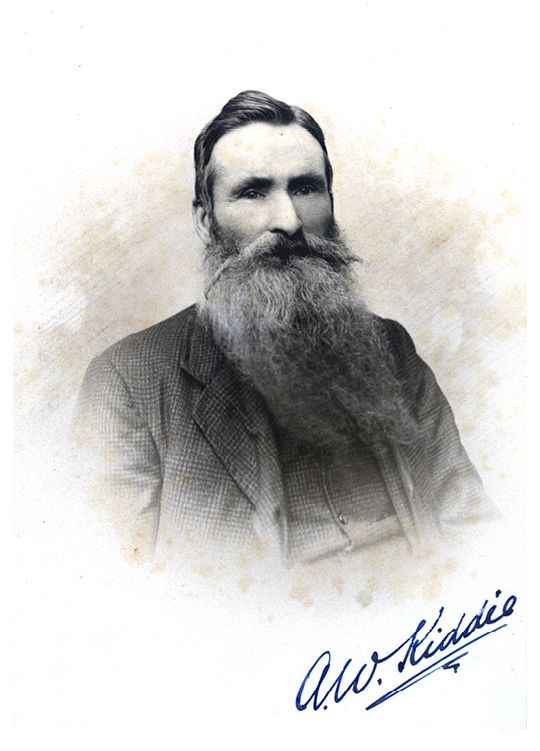 I was a member of the Sefton Park Liverpool Model Yacht Club before the Southport Marine Lakes were made but upon the opening of the Southport Marine Lakes I originated the Southport & District Model Yacht Club of which club the late Sir George Pilkington was the first chairman and at the first public meeting over 30 members were enrolled. I built all my models which were 10 and 20 tonners (scale 1 inch to the foot) and I also constructed my own steamers. The last steam boat I made was a very powerful one being 8 ft long, 10ins beam, 8ins depth of hold fitted with high pressure tilting engine one cylinder with multitubular boiler fired up by anthracite coal and fitted with forced draught and with this boat in open competition I beat all entrants from Liverpool, Manchester and other centres.
I was a member of the Sefton Park Liverpool Model Yacht Club before the Southport Marine Lakes were made but upon the opening of the Southport Marine Lakes I originated the Southport & District Model Yacht Club of which club the late Sir George Pilkington was the first chairman and at the first public meeting over 30 members were enrolled. I built all my models which were 10 and 20 tonners (scale 1 inch to the foot) and I also constructed my own steamers. The last steam boat I made was a very powerful one being 8 ft long, 10ins beam, 8ins depth of hold fitted with high pressure tilting engine one cylinder with multitubular boiler fired up by anthracite coal and fitted with forced draught and with this boat in open competition I beat all entrants from Liverpool, Manchester and other centres.
Some years ago I built a boat shaped like a swan, with an arched neck and upraised wings and she would seat nine passengers. The propeller was driven by foot power and the steering was similar to an ordinary bicycle. This model was particularly picturesque and was quite fast and graceful in her movements and I was very grieved when I heard that she had broken her moorings during a gale and was dashed to pieces against the sides of the lake.
About 15 years ago the late Sir George Pilkington requested me to make him a model of his yacht ‘The Julanar’ which he afterwards presented to the South Kensington Museum where it is still on view. Shortly afterwards Sir George Pilkington bought about 55 models of British and French warships made by the French prisoners of war who were confined in English prisons after the Battle of Trafalgar. These models were very much dilapidated and had been evidently kept in a damp place.
I thoroughly overhauled the whole of these models and re-rigged them. Some of the rigging was made with cord others with silk and some of human hair and I found great difficulty in obtaining suitable hair and whenever I wanted a good strong hair I had to resort to my own beard which at that time I allowed to grow to some length. These were the most handsome models which I had seen and I was asked to make replicas but I refused to do so without authority as I had been instructed to repair the originals and had no license to copy the models.
I began working in ivory about 12 years ago and produced many models of the old buildings of Southport and district. I have also made a model of the Southport Market which was destroyed by fire on October 18th/13. All these models were constructed to correct scale and I spared no effort in order that my details should be absolutely correct. After this I commenced to make models of ships and my first production was a model of the Southport life boat. As this model was satisfactorily accomplished I began to seek out ancient sailing ships of some historic importance and I made an Anglo Saxon warship of the 9th century.
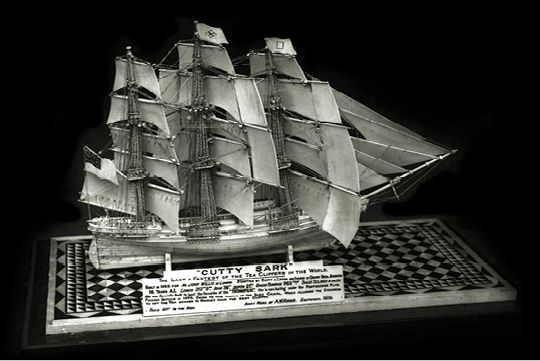 A number of other vessels followed including the ‘Mora’ (which was the ship in which William the Conqueror came to England in 1066), Santa Maria, Victory (Nelson’s flagship), Royal Sovereign, etc.
A number of other vessels followed including the ‘Mora’ (which was the ship in which William the Conqueror came to England in 1066), Santa Maria, Victory (Nelson’s flagship), Royal Sovereign, etc.
I would mention that I have received every courtesy and respect from the curators of Greenwich Museum, South Kensington Museum, Royal Naval Museum and other institutions which I have visited in order to obtain the necessary details for my works and many photographs have been taken of my models which have been retained at some of the above museums. In 1915 the late Lieutenant Commander Garside Tipping invited me to Portsmouth whilst he was getting his guns on board the ‘Sanda’ patrol vessel and I stayed with Commander Tipping as his guest. I shall ever remember my visit to the ‘Sanda’ and particularly happy times which I spent with the Commander and it was a great shock to me when I heard of his death. He and his vessel ’Sanda’ and many of her crew were lost at the bombardment of Zeebrugge in 1916.
Through the instrumentality of Lieut Commander Tipping I was enabled to obtain the copies of the original plans of ‘HMS Victory’ as she was at the Battle of Trafalgar and I also had authority to go aboard the Victory where I took sketches and measurements.
During my life time I have placed several ideas upon the market for which I have registered patent rights and I was the first designer of segmental carved letters for shop signs and stall boards in fact I produced an entirely new style of letters for the whole of the alphabet. I designed and registered an automatic street sweeper and road roller combination as well as an automatic appliance for opening points and frogs for tramway lines. I have several rights for self acting bolts, sash-fasteners and many other more or less sound industrial inventions, including a bread and butter machine which will cut and butter bread at a rate of 60 slices per (the rest of this text is unreadable).
In conclusion I would state that although I am a total abstainer I am much devoted to the fragrant weed and in my time have been an athlete of no mean ability and I have several medals which I have won on the curling rink. I am still passionately fond of fishing and still like to handle the rod when occasion permits.
I am always happy to show my collection to connoisseurs and others and I court the keenest criticism. All my models are entirely made at my own private house where I have my workroom and are the work of my own hands.
A W Kiddie
Andrew Webster Kiddie died in Southport on the 11th December 1920.
